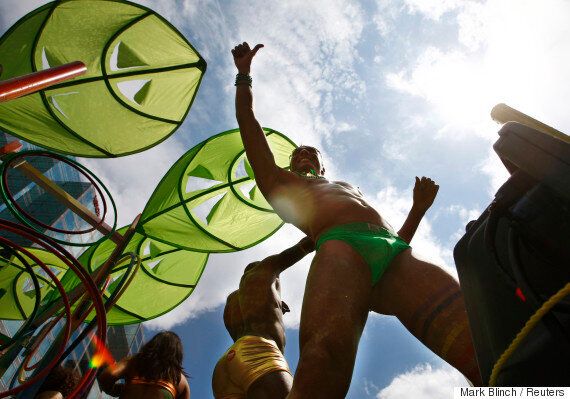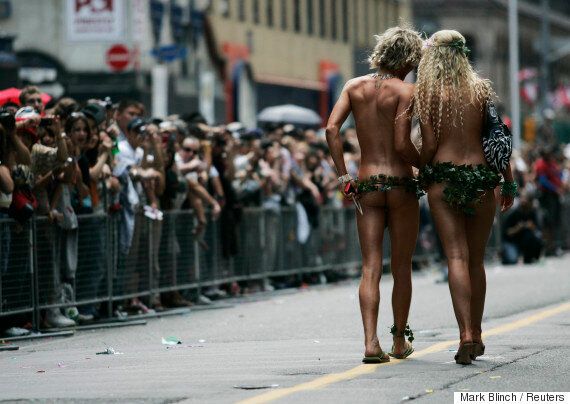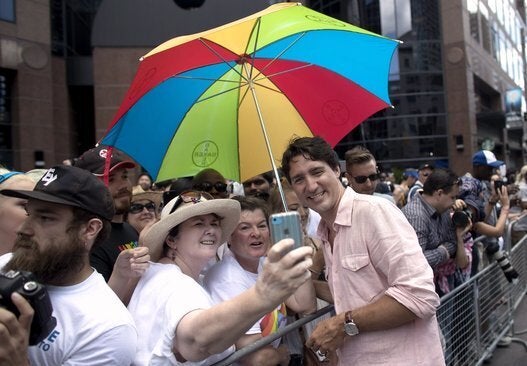It's that time of year again -- Pride Month! A time to reflect on the journeys queer people have made to get where we are today. There is a still a long way to go, but there is also a lot to celebrate.
As a Torontonian, I've seen Pride grow year after year to become the huge international event we know today. I remember when I started going to Pride years ago when we used to call it "Gay Pride."
Fortunately, the name has changed to become more inclusive, but there are some things that stay the same year after year. As far back as I can remember, there has been a lot of talk about the "Pride body."

"I gotta work on my Pride body."
"I gotta get my body ready for Pride."
"I gotta hit the gym all month if I want that Pride body!"
However you put it, it positions a particular body as acceptable for Pride celebrations, while other bodies (those not deemed ready) are unacceptable. Back then I didn't know exactly what a Pride body was, but I knew I didn't have it. As a young, queer man, I knew it wasn't a fat body.
It's rooted in shame and negativity around one's current body.
So, what is a Pride body? You've probably heard of a beach body or bikini body -- similarly, a Pride body is a goal body type, unachievable by most. Commonly, it's based on the desire to change the way one's body looks in order to make it more desirable to others. It's rooted in shame and negativity around one's current body. It's often based on a comparison of one's body to an ideal body which is typically (over) represented in media and popular gay and queer culture.
A Pride body is the one we see in all the advertisements for Pride parties, or on a float in a Speedo, dancing with a water gun. It's the body in the poster for the circuit party, wearing a leather harness and army-themed short-shorts. It's the body tagged with a bright green Speedo, representing a major sponsor's commitment to celebrate diversity (or generate pink dollars).
These bodies are used to advertise Pride events and to lure in spectators and participants (clients). A Pride body takes effort and time, diet and exercise, and it is best dressed in new clothes -- of course, because it's all tied to capitalism. We couldn't have it any other way.

It's perpetuated by a popular discourse around fitness and health that is toxic, fat-phobic, ableist, ageist, classist, racist, queer and trans antagonistic, sexist and misogynist, as it is often framed within normative expectations of fitting bodies neatly within a gender binary. Gay, bi, queer and trans men are expected to be lean and muscular, have a big package, a beard and have new outfits to show it all off.
It is a shame that we can't all just feel happy about our bodies the way that they are. It is a shame that some people go to great lengths to change their body, perhaps employing means that may not be the healthiest or safest.
It is a shame that we don't celebrate all bodies at Pride, to shift the gaze onto diverse representations.
It is a shame we feel the need to change ourselves for an event which should be a celebration of ourselves.
We need to stop working on our Pride body and start working on our body pride.
Follow HuffPost Canada Blogs on Facebook
Also on HuffPost:
